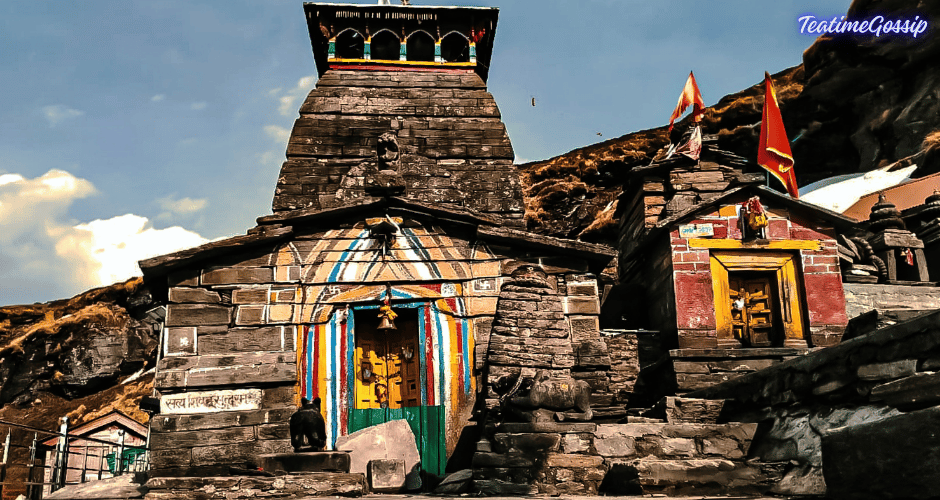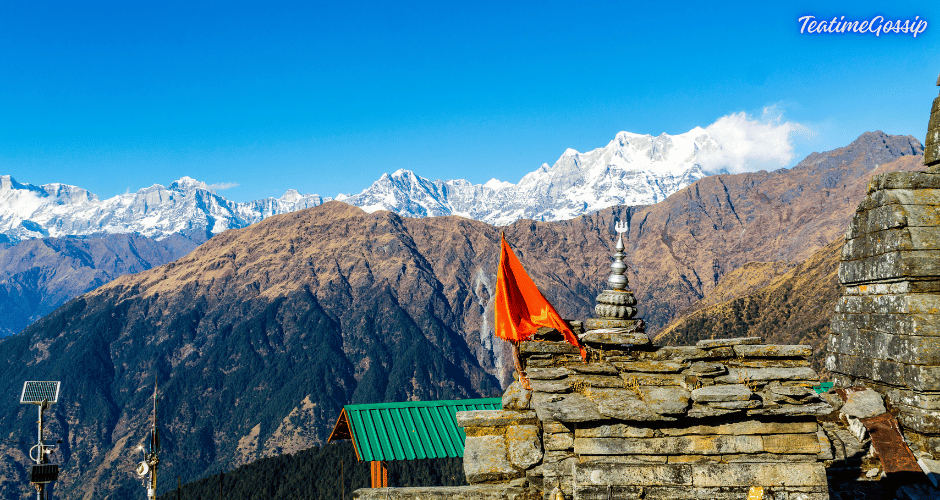Tungnath: The Highest Shiva Temple in the World

Tungnath, nestled in the majestic Garhwal region of Uttarakhand, India, stands as a beacon of spiritual serenity and breathtaking natural beauty. As the highest Shiva temple in the world, perched at an altitude of 3,680 meters (12,073 feet), Tungnath attracts pilgrims, trekkers, and nature enthusiasts alike. This article explores the rich history, cultural significance, and stunning landscape surrounding Tungnath, making it a must-visit destination.
Historical and Religious Significance
Tungnath, meaning “Lord of the Peaks,” is part of the Panch Kedar, a group of five sacred Shiva temples in the Indian Himalayas. According to legend, the Pandavas, the heroes of the Mahabharata epic, sought to atone for their sins after the Kurukshetra war. Lord Shiva, to avoid them, transformed into a bull and went into hiding in the Garhwal region. When the Pandavas discovered him, Shiva’s body parts reappeared at different locations. Tungnath is where the arm (bahu) of Lord Shiva emerged.
The temple’s origin dates back over a thousand years, with its architecture reflecting the North Indian style. Despite its remote location, Tungnath has been a continuous center of worship and pilgrimage. The temple complex comprises a small sanctum, a mandapa (assembly hall), and a courtyard adorned with stone carvings and statues.
The Trek to Tungnath
Reaching Tungnath requires a moderately challenging trek, which adds to the sense of adventure and devotion. The trek starts from Chopta, a picturesque hamlet often referred to as the “Mini Switzerland of India” due to its lush meadows and dense forests. The 5-kilometer (3.1-mile) trek to Tungnath is well-marked and offers panoramic views of the surrounding peaks, including Nanda Devi, Trishul, and Chaukhamba.

The trail meanders through rhododendron groves, alpine pastures, and rocky terrain. Along the way, trekkers can encounter a variety of flora and fauna, making it a haven for nature lovers and birdwatchers. The trek is particularly enchanting during the spring and summer months when the landscape is adorned with vibrant blooms and the weather is mild.
Tungnath Temple: An Architectural Marvel
Despite its modest size, the Tungnath temple exudes a profound sense of spirituality and architectural brilliance. Constructed primarily from stone, the temple is characterized by its simplistic yet sturdy design, harmonizing with the rugged Himalayan environment. The sanctum houses a black rock idol of Lord Shiva, adorned with flowers and offerings from devotees.
The temple complex also includes smaller shrines dedicated to other deities, such as Parvati and Ganesha. The serene ambiance, coupled with the crisp mountain air, creates an atmosphere conducive to meditation and introspection. The lack of commercial activity around the temple further enhances its spiritual charm.
Chandrashila: The Summit of the Moon
A short but steep climb from Tungnath leads to Chandrashila, a summit situated at an altitude of 4,000 meters (13,123 feet). Chandrashila, meaning “Moon Rock,” offers a 360-degree view of the Himalayas, making it one of the most spectacular vantage points in the region. According to mythology, Lord Rama meditated here after defeating Ravana, adding another layer of spiritual significance to the site.
Witnessing the sunrise from Chandrashila is a transformative experience, as the first rays of the sun illuminate the snow-capped peaks, casting a golden glow across the landscape. The sense of accomplishment upon reaching the summit, combined with the awe-inspiring views, makes it a highlight of the Tungnath trek.
How to Reach
Reaching Tungnath involves a combination of travel modes, including road transport and trekking. Here is a detailed guide on how to reach Tungnath:
By Air
Nearest Airport:
- Jolly Grant Airport (Dehradun): The nearest airport to Tungnath is Jolly Grant Airport, located approximately 225 kilometers from Chopta, the base for the Tungnath trek.
From the Airport:
- You can hire a taxi or take a bus from Jolly Grant Airport to reach Chopta. The journey by road takes around 7-8 hours.

By Train
Nearest Railway Station:
- Haridwar Railway Station: Haridwar is the nearest major railway station, located about 225 kilometers from Chopta.
From the Railway Station:
- Taxis and buses are available from Haridwar to Chopta. The drive takes around 7-8 hours.
- Alternatively, you can take a train to Rishikesh, which is about 209 kilometers from Chopta, and then proceed by taxi or bus.
By Road
From Major Cities:
- Delhi to Chopta: Chopta is around 450 kilometers from Delhi. You can drive or take a bus to reach Chopta. The drive typically takes 10-12 hours.
Via Rishikesh:
- Rishikesh to Chopta: From Rishikesh, Chopta is approximately 209 kilometers away. Regular buses and taxis operate from Rishikesh to Ukhimath, from where you can hire a taxi to Chopta.
Best Time to Visit
The ideal time to visit Tungnath is from April to November, with the temple remaining open during these months. The weather is pleasant, and the trekking paths are accessible. During the winter, heavy snowfall blankets the region, making the trek challenging and the temple inaccessible. However, for those seeking a winter adventure, the snow-covered landscape offers a unique, albeit more strenuous, trekking experience.
Tungnath is more than just a temple; it is a confluence of spirituality, nature, and adventure. Its serene location amidst the towering Himalayas provides a perfect setting for devotees and trekkers to connect with nature and experience inner peace. Whether you are seeking a spiritual journey, a trekking adventure, or simply a retreat from the hustle and bustle of everyday life, Tungnath offers a transformative experience that lingers long after you have descended its sacred paths.